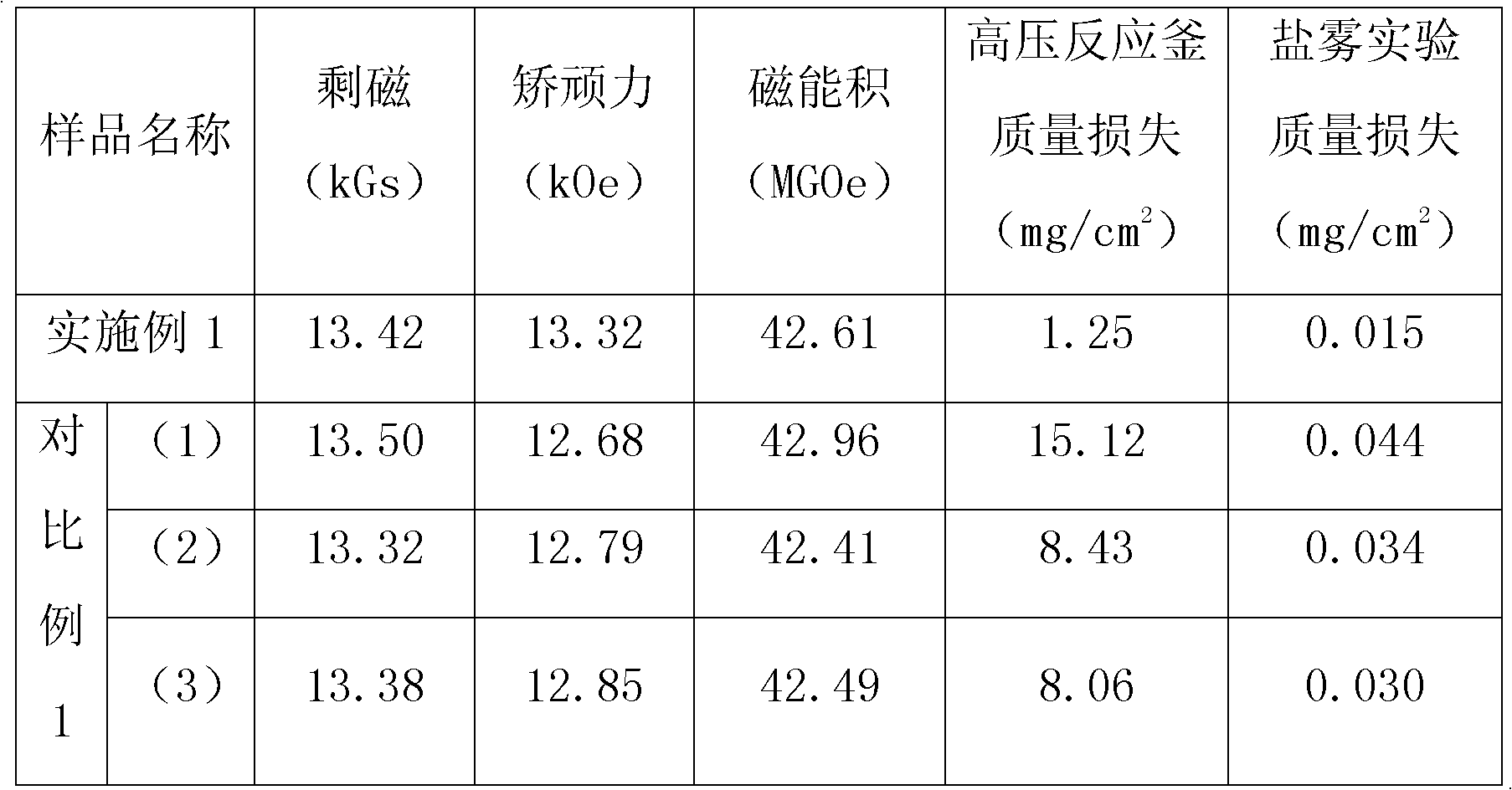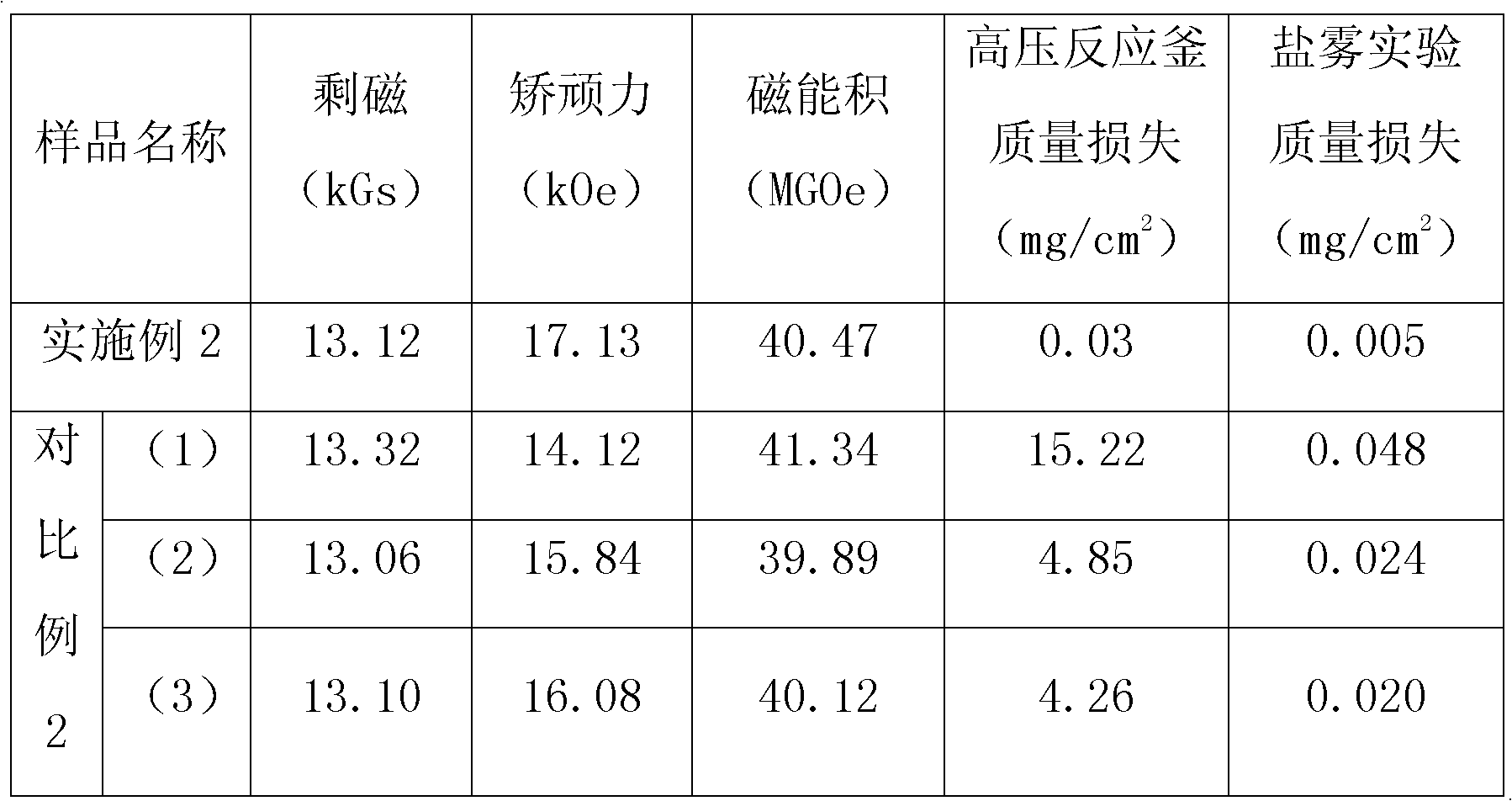Sintered neodymium-iron-boron-based permanent magnet material with high coercive force and high corrosion resistance, prepared by doping copper nano-particles, and preparation method thereof
A copper nanoparticle, high coercivity technology, applied in the direction of magnetic materials, magnetic objects, electrical components, etc., can solve problems such as grain shedding and overall corrosion of alloys
- Summary
- Abstract
- Description
- Claims
- Application Information
AI Technical Summary
Problems solved by technology
Method used
Image
Examples
Embodiment 1
[0014] Use quick-setting technology to change the composition to Nd 13.7 Fe bal Al 0.3 B 6 (atomic percent content) of the alloy is prepared as flakes, and then the powder is made into a powder with an average particle size of 3 microns by using a hydrogen crushing-jet milling process. Then, 0.2% by weight of Cu nano powder with an average particle size of 100 nm was added to the above-mentioned initial powder, and the two powders were uniformly mixed by a mixer. The uniformly mixed powder was oriented in a magnetic field of 2.5T and pressed into shape. Then put the compact into a high-vacuum sintering furnace, and heat up to 1120°C for sintering for 3 hours. Then carry out secondary heat treatment, wherein the temperature of the primary heat treatment is 930°C for 2 hours; the temperature of the secondary heat treatment is 580°C for 1 hour to obtain a sintered magnet.
Embodiment 2
[0022] Use quick-setting technology to change the composition to Nd 12.8 Dy 0.5 Fe bal Al 1.0 Nb0.3 B 6 (atomic percent content) of the alloy is prepared as flakes, and then the powder is made into a powder with an average particle size of 5 microns by using a hydrogen crushing-jet milling process. Afterwards, 2.5% by weight of Cu nano powder with an average particle size of 500 nm was added to the above-mentioned initial powder, and the two powders were uniformly mixed by a mixer. The uniformly mixed powder was oriented in a magnetic field of 2.5T and pressed into shape. Then put the compact into a high-vacuum sintering furnace and heat up to 1020°C for sintering for 4 hours. Then carry out secondary heat treatment, wherein the temperature of the primary heat treatment is 830°C for 3 hours, and the temperature of the secondary heat treatment is 480°C for 3 hours to obtain a sintered magnet.
Embodiment 2 and comparative example 2
[0026] Table 2 Example 2 and Comparative Example 2 magnet magnetic properties and corrosion resistance comparison
[0027]
[0028] The above results illustrate that for the same sintered NdFeB magnets with the same composition, the magnets prepared by the Cu particles with an average particle diameter of 500 nanometers of the present invention are better than those of undoped, doped with 4 microns of average particle diameter and 40 nanometers of Cu particles with an average particle diameter of 40 nanometers. The coercive force of the magnet is significantly improved, and the remanence of the magnet is equivalent to the magnetic energy product, and the corrosion resistance of the magnet is obviously improved.
PUM
 Login to View More
Login to View More Abstract
Description
Claims
Application Information
 Login to View More
Login to View More - R&D Engineer
- R&D Manager
- IP Professional
- Industry Leading Data Capabilities
- Powerful AI technology
- Patent DNA Extraction
Browse by: Latest US Patents, China's latest patents, Technical Efficacy Thesaurus, Application Domain, Technology Topic, Popular Technical Reports.
© 2024 PatSnap. All rights reserved.Legal|Privacy policy|Modern Slavery Act Transparency Statement|Sitemap|About US| Contact US: help@patsnap.com










